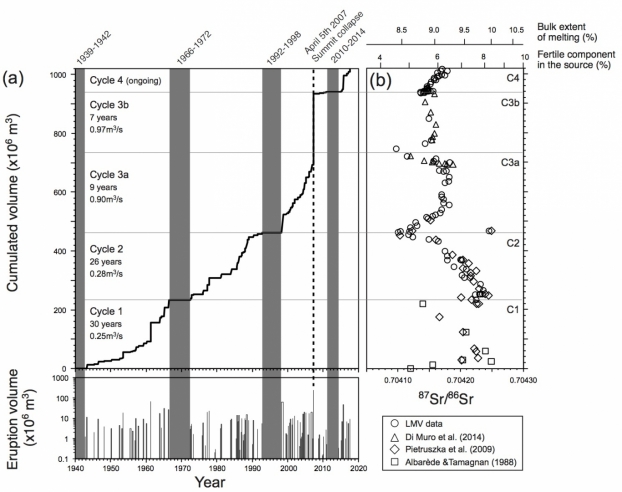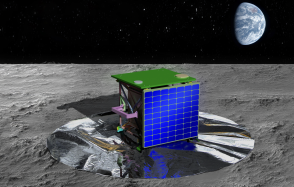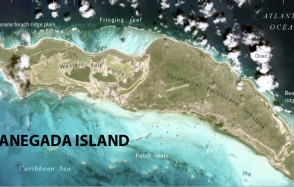Piton de la Fournaise’s ten-year eruptive cycles linked to the fertility of its mantle source
Piton de la Fournaise (Réunion Island) is one of the most active volcanoes on the planet. However, it has alternating periods of intense activity (12 to 24 years) and periods of rest (3 to 6 years). This study, involving researchers from the Laboratoire magmas et volcans in Clermont-Ferrand and the Institut de physique du globe in Paris, shows that this cyclical activity is closely linked to the fertility of its mantle source, which modulates the flow of magma towards the surface.

Publication date: 29/10/2018
General public, Observatories, Press, Research
Related observatories : Volcanological Observatory of Piton de la Fournaise (OVPF-IPGP)
Related themes : Natural Hazards








